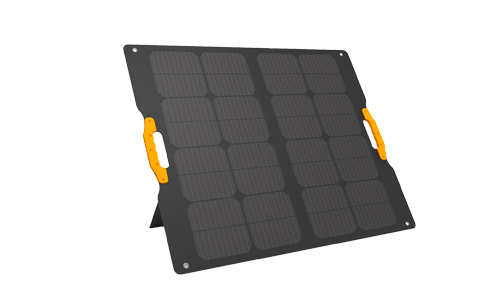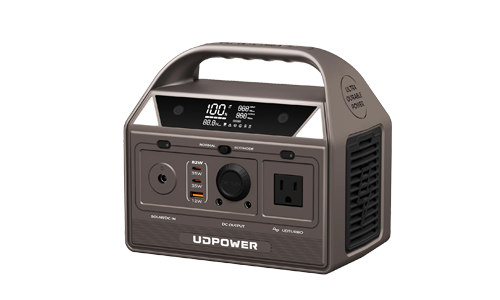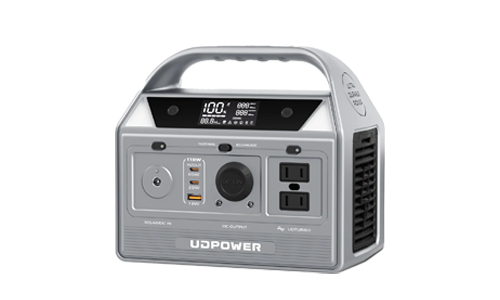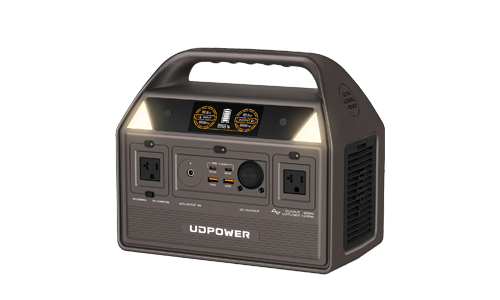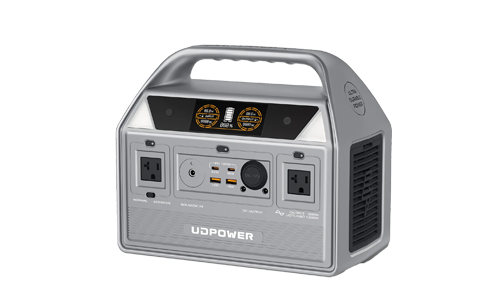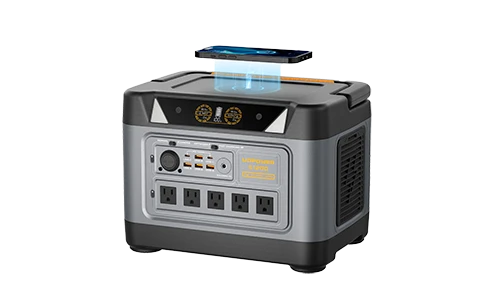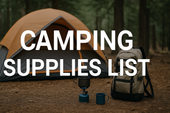Camping Rules Guide: 2/2/2, 3/3/3, 200/200/200 & More
ZacharyWilliamCamping by Numbers: Rules & Distances You’ll Actually Remember
Quick Conversions (No Math Brain Needed)
“Steps” = a rough estimate using an adult’s normal stride. Handy when you don’t have a tape measure—good enough for campsite choices, but always follow posted signs and ranger instructions first.
Why numbers? Because your brain remembers them on the trail and behind the wheel. Each rule below is a compact cue with just enough detail to keep you safe, comfortable, and considerate—without memorizing a manual. Think of these as shortcuts built on top of official park rules and Leave No Trace guidance, not a replacement for them.

Use the numbers as your default plan, then adjust for your crew, your rig, the weather, and any specific local regulations.
2/2/2 — Smooth Travel Days
What it does: Reduces fatigue, builds in buffer for surprises (full campgrounds, road work, detours), and gives you real daylight to set up, cook, and relax instead of scrambling with a headlamp.
- Plan scenic breaks: trailheads, overlooks, small towns—your “2-hour reset” spots.
- Arrive early: sunlight makes pitching tents and leveling rigs much easier and safer.
- Best for: first trips, weekenders, and anyone towing or learning a new RV.
- New towers & mountain roads: stick to 2/2/2 until you know your limits and how your rig handles hills and wind.
Example travel day
- 08:00 depart → 10:00 scenic break (trailhead, overlook, coffee, bathroom).
- 12:00 lunch + longer rest (stretch, refuel, check road & weather notices).
- By ≤ 14:00 arrive at camp (pick site, fetch water, set up before dinner).
3/3/3 — Long-Haul Alternative
Why use it: Perfect for cross-country loops, extended road trips with kids or pets, and anyone who wants built-in recovery days for laundry, showers, and real exploration—without arriving exhausted.
- Energy & morale: Two “zero days” after each move keep everyone fresh and reduce accidents and grumpy decisions.
- Logistics window: Refill water, dump tanks, charge batteries, and restock groceries without rushing between checkout and check-in.
- Weather buffer: More chances to pick safe driving windows and avoid setting up in storms or in the dark.
When to Choose 3/3/3
- Multi-week routes where “seeing” and “doing” beat racking up miles.
- Families & pets: predictable nap/meal/walk cycles make everyone happier.
- Boondocking learners: easy cadence to practice power/water discipline between resupplies.
- Seasonal extremes: plan moves for cool mornings; explore on the mild days in between travel days.
Sample 7-day loop (300-mi cadence)
- Day 0 (Home prep): groceries, fill water/propane, download offline maps, confirm reservation + backup options.
- Day 1 (Travel ≤300 mi): depart early, arrive by ≤3 pm, level, hook up or set solar, quick perimeter and hazard check.
- Day 2 (Explore): hikes, museums, bikes; only light chores.
- Day 3 (Reset): laundry, trash/recycle, dump/fill, top up power, plan the next leg.
- Day 4 (Travel ≤300 mi): move during the best weather window; repeat arrival rhythm.
- Day 5 (Explore) and Day 6 (Reset) repeat the pattern.
Planning Framework
- Reservations: book your “anchor” nights in high-demand areas; keep a backup and an overflow option (public lands, fairgrounds, or nearby private parks).
- Average speeds: interstates ~55–60 mph average (fuel/rests included), scenic/2-lane roads ~40–45 mph. Plan arrival from these realistic numbers—not your maximum speed.
- Fuel & food: schedule a proper 45–60 min lunch stop (bathrooms, stretch, fuel) instead of many tiny breaks that never feel restful.
- Seasonal daylight: in winter or at higher latitudes, treat “arrive by 3 pm” as “arrive while it’s still clearly daylight,” even if that means 1–2 pm.
- Arrival checklist: site number → hazards (branches, glass, slope, low posts) → wind direction → rig orientation → stabilize/level → power/water → awning only if conditions are calm.
Team rotation on drive days
- Driver: 2-hour stints, focused only on driving.
- Navigator: weather/traffic checks, next fuel stop, calls campground if ETA changes.
- Morale captain: snacks, hydration, playlist/podcasts, pet breaks, kid activities.
3/3/3 for Boondocking
- Power: use reset days for bulk charging (solar peak 10 am–2 pm). Shift high-draw tasks (e.g., vacuum, induction cooking where allowed) to midday.
- Water: 2–3 gal/person/day is a common baseline. Reset day = refill + sanitize high-touch surfaces.
- Waste: pack out food bits; broadcast greywater 200 ft from water (see 200/200/200 rule).
- Practice at home: do a “driveway camp” night to see your real power/water usage before relying on remote sites.
Kids & Pets—Keep It Smooth
- Pace snacks & water: small, steady snacks and sips beat sugar or caffeine spikes.
- Quiet-hours friendly: use battery power for white-noise fans or night lights; avoid generator use after arrival whenever possible.
- Hot/cold days: aim to arrive early to set shade, vents, bed layers, and pet cooling/warmth before dinner chaos.
Winter / heat variations
- Winter: drive during thaw hours; arrive early to set up freeze-safe hookups, insulate hoses, or switch to internal tanks only.
- Heat: depart at dawn; park with shade on the afternoon side; prioritize airflow, water, and an earlier-than-usual dinner.
Common Mistakes & Easy Wins
-
Mistake: booking every night months ahead → no weather or route flexibility.
Win: anchor reservations + identified overflow/backup options. -
Mistake: counting highway speed, not average day speed.
Win: plan from 45–55 mph averages including stops. -
Mistake: arriving hungry → rushed, sloppy setup.
Win: pre-made or easy meal for move days.
Printable mini-checklist for move day
- Weather/road check → choose best AM window.
- Secure interiors, latches, vents, awnings; disconnect utilities.
- Depart by 9–10 am → 2-hour stretch/fuel cadence.
- Call/online check-in by noon if ETA changes.
- Arrive ≤3 pm → inspect site → level/orient → connect power/water.
- Early, simple dinner; plan tomorrow while everyone is still fresh.
Use 3/3/3 as a rhythm, not a rigid law—trade a mile for a memory when it’s worth it, and tighten the rule when conditions are harder than expected.
What is the 444 rule camping?
The “4/4/4 rule” is a slow-travel rhythm some RVers and long-term campers prefer for deeper exploration and lower fatigue. You cover less distance per week than with 2/2/2 or 3/3/3, but you get more “real life” time in each place.
- Great for: families, pets, remote parks, and trips built around hobbies (biking, paddling, photography, fishing).
- Plan from averages: 4 hours driving is still based on realistic day-averages (55–60 mph highways, 40–45 mph scenic roads).
- Cadence tradeoff: you’ll check off fewer pins on the map, but know each area better and stay more rested.
Example micro-itinerary
- Day 1: travel ≤4 hrs, arrive by 4 pm, level/orient, early dinner and short neighborhood walk.
- Days 2–3: explore trails/town, do one “maintenance” task per day (laundry, grocery, gear check).
- Day 4: reset gear, top off water/power, plan next hop, early night before travel.
What are the 7 C's of camping?
- Care — for land, water, and wildlife; follow posted rules, seasonal closures, and fire restrictions.
- Caution — check weather, fire danger, road status, and site hazards before you commit.
- Courtesy — keep noise/light low, obey 10–6 quiet hours, give others space on trails and in camp.
- Cleanliness — pack it in/pack it out; strain dishwater and manage greywater 200 ft from water.
- Conservation — use existing campsites and fire rings; keep group size and physical impact small.
- Cooperation — communicate with your group and hosts; share information and offer help when appropriate.
- Common Sense — choose safe sites, secure food/scents, and bail early if conditions are sliding the wrong way.
What is the rule #1 of camping?
“Leave No Trace” is the umbrella rule that everything else fits under. The goal is simple: the next person shouldn’t be able to tell you were there—and wildlife shouldn’t be trained to look for you.
- Site choice: use durable surfaces and established pads/rings; avoid fragile meadows, cryptobiotic soil, and muddy banks.
- Distance: keep waste, washing, and catholes 200 ft from water, trails, and other camps (more if local rules require).
- Waste: pack out all trash/food bits; in many popular areas you’ll be asked to pack out toilet paper or all human waste.
- Wildlife: store food/scents away from tents (see the 100/30 rule) and never feed wild animals.
- Community: minimize noise and artificial light, especially after dark. Good neighbors get invited back.
What is the 10 year rule for camping?
The “10-year rule” is a park policy (not a law) used by many private RV parks and resorts to manage appearance and safety. Enforcement varies by location, season, and how busy they are.
How to get approved with an older rig
- Call ahead: ask about their policy before booking online—especially for older RVs, buses, or home-built rigs.
- Send photos: clean exterior/interior shots and a brief maintenance history go a long way.
- Show readiness: proof of insurance, no leaks, quiet generator/battery use, and a reputation for tidy sites.
- Be honest: most managers care about condition, not just the year sticker. Don’t misrepresent your rig; it can backfire at check-in.
What are the 10 essentials for camping?
- Navigation — map/compass/offline GPS. Download offline maps before you lose service.
- Illumination — headlamp + spare batteries; a tiny backup light is cheap insurance.
- Sun protection — hat, sunglasses, SPF and lip SPF—even on cloudy days or snow.
- First-aid supplies — blister kit, meds, bandages, tape, and any personal prescriptions.
- Fire — lighter/matches + backup, plus tinder; only where fires are allowed.
- Repair kit & tools — knife/multi-tool, tape, patches, spare cord, and a way to fix your shelter.
- Emergency shelter — space blanket, bivy, or tarp, separate from your main tent in case you get separated.
- Extra nutrition — food beyond the plan (high-calorie, non-perishable).
- Extra hydration — extra water plus a treatment method (filter, tablets, or boiling).
- Extra insulation — dry layers for the worst weather you reasonably might face.
Scale your kit to trip length, remoteness, weather, and group size. For car camping you can add a small roadside kit (jumper cables, tire inflator, basic tools) and still keep the 10 Essentials in a grab-and-go bag for day hikes away from camp.
The next rules focus on spacing—how far to keep your camp, waste, water, and food from each other. They’re based on common backcountry guidelines; local land managers may require stricter distances, so always read signs and trailhead notices.
200/200/200 — Low-Impact Distances
Why it matters: It protects shorelines, wildlife corridors, and everyone’s sense of space—and reduces the chance your greywater or waste ends up in someone else’s campsite or drinking source.
- Count paces: 70–80 adult steps is roughly 200 ft—enough for a quick on-the-ground check.
- Campground exception: in front-country campgrounds, follow the pad and site boundaries; the 200-ft idea still applies for washing and greywater.
- Local rules: some parks specify longer distances or require designated sites only. If a sign says something different, the sign wins.
Use 200 ft as your default spacing whenever you don’t have specific guidance.
How to pace out 200 ft
From the water’s edge, step back off the trail and walk a straight line for 70–80 adult paces. Then double-check you’re also away from trails and other camps before you use the area for washing or waste.
6–8/200 — The Cathole Standard
How-to: Choose durable soil (not streambanks), dig, do your business, cover, and disguise. In deserts, narrow canyons, and busy alpine areas, land managers often require a WAG bag or other pack-out system instead of catholes.
Step-by-step cathole
- Walk ≥ 200 ft from water, trails, and camp; pick soil away from drainage lines.
- Dig 6–8 in (15–20 cm) deep; do your business; backfill and disguise the spot with natural materials.
- Pack out toilet paper anywhere it doesn’t break down quickly—or whenever rules say to.
30/30 — Lightning Safety
Lightning is a serious risk in open areas, ridgelines, and near lone trees. The 30/30 rule gives you a simple test: if you can count 30 seconds or less between flash and rumble, you’re close enough to be hit.
- Get lower: leave ridgelines and lone trees for safer, lower, forested terrain.
- Spread out: in forest, crouch low and spread your group 15–20 ft apart so a single strike doesn’t affect everyone.
- Vehicles: in many cases a closed, metal-roofed vehicle is safer than staying outside; avoid touching metal parts inside.
What to do when thunder starts
- If thunder follows lightning within ≤ 30 seconds: get to lower, less exposed terrain immediately.
- Avoid ridgelines, lone trees, tall metal structures, and open water; stash trekking poles and tall metal gear.
- After the last thunder, wait a full 30 minutes before resuming exposed activities like ridge hikes or paddling open water.
100/30 — Food & Tents Don’t Mix (Bear Country)
Make a simple triangle: sleep, cook, store. Treat toothpaste, sunscreen, trash, and scented toiletries like food—because to wildlife, they smell like it.
Simple camp triangle
Picture a triangle on the ground: sleep area ↔ cooking area ↔ food storage, each spaced ~100 ft apart. Count anything scented—toothpaste, sunscreen, deodorant, trash—as “food” for storage purposes.
10–6 — Quiet Hours
Quiet hours protect sleep, wildlife, and the overall vibe of campgrounds. Many parks post something like 10 pm–6 am or 9 pm–7 am—treat those as the minimum standard and aim to be even quieter.
- Sound: swap to low voices, no outdoor music, and headphones for movies or games.
- Light: dim lanterns, avoid shining headlamps into other sites, and angle lights down.
- Engines: avoid idling vehicles, late-night arrivals, and generator use during quiet hours whenever possible.
If a neighbor is loud after quiet hours, start with a friendly, calm conversation. If that fails, involve the camp host or ranger—don’t escalate the conflict yourself.
Smart, Safe Campfires
- Check bans first: in dry seasons or windy conditions, fires may be prohibited—use a stove instead.
- Use existing rings: don’t build new fire rings if one already exists; extra rings scar the area.
- Local wood: buy or gather where allowed near camp; never transport firewood long distances because of pests.
- Size matters: a knee-high flame cooks better, smokes less, and is easier to control and extinguish.
- No trash fires: don’t burn cans, foil, plastic, or glass—pack them out instead.
3-step “cold to the touch” test
- Drown the fire with plenty of water until hissing stops.
- Stir the ashes and coals thoroughly with a stick or shovel; add more water and stir again.
- Carefully feel the ashes/rocks near the coals. If anything is still warm, repeat until everything is cold to the touch.
Waste & Greywater, the Easy Way
Strain dishwater, pack out food bits, then broadcast greywater 200 ft from water, trails, and campsites. Biodegradable soap still needs soil time to break down—keep it out of creeks and lakes.
- Two bags: one for recycling (where accepted), one for food-soiled trash and micro-trash.
- Strainer: a tiny mesh strainer or piece of screen keeps food bits out of the ground and into your trash bag.
- Hands: hand sanitizer beats big sudsy wash-ups for most routine cleaning at camp.
Dress for Comfort, Not the Forecast
Cotton stays wet and cold; pick synthetics or wool next to skin. A windproof shell turns a mild jacket into an all-day solution, and a dry base layer at night can make the difference between sleeping and shivering.
- Base: light synthetic or wool to pull sweat off your skin.
- Mid: fleece, light puffy, or wool sweater for warmth.
- Shell: wind and water-resistant layer to trap heat and block gusts.
- Hot days: carry a light shell anyway—mountain weather can change in minutes.
- Cold nights: sleep in dry, dedicated night layers instead of the set you sweat in all day.
Hydration & Sun
Small, steady inputs beat “chugging later.” Dehydration and sunburn sneak up on you, especially at altitude or on water.
- Water budget: many hikers aim for roughly 2–3 L per person per day in mild conditions, more (3–5 L) in heat or heavy exertion.
- Electrolytes: for long, hot days, add an electrolyte drink or mix to keep salts balanced.
- Sun check: reapply sunscreen on face, neck, ears, and hands; don’t forget lip SPF and a brimmed hat.
Arrival Routine That Saves Headaches
Five minutes with the board and a quick site walk can save you fines, re-pitching, or neighbor conflicts later. Think of it as a landing checklist.
- Board: check fees, payment method, quiet hours, fire rules, wildlife notices, and any special closures.
- Map: note water sources, toilets, dumpsters, and emergency exits before you commit to a site.
- Site walk: check overhead for branches or lines; underfoot for glass, fire scars, or uneven ground; and where water will run if it rains hard.
A quick orientation also tells you where to go if you need help in the middle of the night—worth the extra few minutes.
Putting It Together — Real-World Playbooks
Weekend Car Camp
- Travel with 2/2/2; aim to arrive by early afternoon on Friday.
- Pitch with 200/200/200; use 6–8/200 if no toilets are available.
- Cook/store via 100/30; observe 10–6 after dark for neighbors.
- Keep a small 10 Essentials kit ready for short hikes away from the car.
Backpacking Overnight
- Site & sanitation: 200/200/200 + 6–8/200 as your baseline; adjust if local rules require pack-out.
- Weather: at first rumble, apply 30/30 and move off ridgelines.
- Comfort: Three Layers + 15/15 hydration rhythm.
- Pack weight: multi-use items (buff, trekking poles, small repair kit) keep your pack lighter but still safe.
Long Road Loop (RV/Trailer)
- Use 3/3/3 or 4/4/4 to avoid fatigue and keep morale high over weeks, not just days.
- On arrival, do One-In · Two-Look · Three-Check before leveling or unhitching.
- Mix in occasional “zero-move” weeks in places you love to avoid feeling rushed.
Recommended Gear — Quiet Power That Respects Quiet Hours
Always follow the posted rules for fires, generators, and quiet hours. If a local rule conflicts with any guideline here, local rules win.
Beginner FAQ (No Silly Questions)
Can I wash dishes in the creek?
No. Strain out food scraps into a bag to pack out, then broadcast greywater 200 ft from water, trails, and other camps. Even biodegradable soap needs soil time to break down.
How do I estimate 200 ft without a tape?
Walk 70–80 adult steps. For 100 ft, use 35–40 steps. It’s not survey-grade, but it’s good enough for campsite spacing.
Are campfires always allowed?
Often there’s a seasonal or temporary ban. Check the notice board or ask a ranger. When fires are allowed, use an existing ring, keep it small, and extinguish until the ashes are cold to the touch.
What if I arrive after dark?
Prioritize safety and quiet: take the nearest safe, legal alternative for the night (overflow lot, pull-through site, even a rest area where allowed) and move to a better site in the morning.
How do I power lights or a CPAP without breaking quiet hours?
Use a battery power station instead of a gas generator. Quiet, fume-free options like the UDPOWER S1200 keep essentials running while staying neighbor-friendly. For medical devices, test your setup at home first and follow your device manual.
Do I always need a reservation?
Not always—many public campgrounds have first-come, first-served sites. But in popular areas and peak season, reservations or at least a solid backup plan will save you a lot of stress.
What if I forget an important item like a sleeping bag?
In mild weather you may improvise with extra clothing and blankets. In cold conditions, consider turning back, renting gear nearby, or changing your plan—hypothermia is not worth “toughing it out.”
